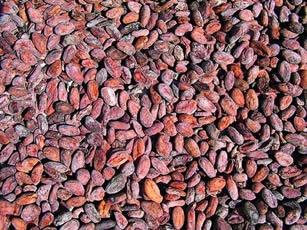Raw sugar prices climbed to their highest level in 29 years on 1 February, with raw sugar for March delivery reaching 30.05 US cents a pound in early afternoon trading on ICE Futures US.
White – or refined – sugar for May delivery hit US$767 a tonne on LIFFE on January 27, the highest level seen in more than two decades. Sugar prices doubled during 2009 and were up another 12 per cent in January. Excess rains in Brazil, the world’s leading grower, and a weak monsoon in India, the second biggest producer and largest consumer, has hit cane output in the two countries. However, in the first days of February a wave of fund selling across several commodity markets triggered by renewed concerns about Euro zone debt and the health of the world economy led to a flurry of selling in sugar holdings.
The global sugar market is expected to remain tight for another few months, if not longer. US agribusiness major’s CEO Alberto Weisser in a 30 January interview with Business Week, believes prices may not return to ‘normal’ levels until the end of 2010 as buyers compete for limited supplies from the world’s biggest producer, Brazil. Brazil’s Agricultural Ministry has cut its sugar production estimate for the country this year to 34.6mn tonnes, six per cent below its September estimate. India, meanwhile, is expected to have to import at least seven million tonnes in the 2009/10 season.
Kenya top tea eases off record price Best BP1s were sold at an average of US$3.55 a kilogram at the 25-26 January auction in Mombasa compared with US$3-85-US$4.55 a kilogram the previous week and a record of US$5.54 in mid-December. Brighter Pekoe Fanning Ones (PFIs), meanwhile, sold at between US$2.70 and US$$3.00 per kilogram at the 25-26 January sale compared with US$2.96-US$3.28 a kilogram at the previous week’s auction.
Best BP1s were sold at an average of US$3.55 a kilogram at the 25-26 January auction in Mombasa compared with US$3-85-US$4.55 a kilogram the previous week and a record of US$5.54 in mid-December. Brighter Pekoe Fanning Ones (PFIs), meanwhile, sold at between US$2.70 and US$$3.00 per kilogram at the 25-26 January sale compared with US$2.96-US$3.28 a kilogram at the previous week’s auction.
In late December, brighter PFIs were changing hands at US$$3.60-US$3.96 a kilogram. Kenyan tea prices hit record highs in 2009 due to supply shortfalls following a prolonged drought that affected the country’s tea-growing regions in the first months of the year.
The Kenyan drought had prompted concern that global production would not bridge the deficit in that country. Kenya’s tea production picked up towards the end of 2009 on account of favourable weather conditions experienced in growing regions following the onset of the short rains season.
Cocoa prices sink to three-month low Cocoa futures declined to a three-month low in the first few days of February as a rally in the US dollar to its highest level against the euro since last May helped erode the appeal of commodities as alternative investments. May cocoa on LIFFE had sunk to UK£2,199 a tonne while ICE May cocoa closed the day’s trading at US$3,001 a tonne by 5 February.
Cocoa futures declined to a three-month low in the first few days of February as a rally in the US dollar to its highest level against the euro since last May helped erode the appeal of commodities as alternative investments. May cocoa on LIFFE had sunk to UK£2,199 a tonne while ICE May cocoa closed the day’s trading at US$3,001 a tonne by 5 February.
Fundamentals also weighed in on cocoa market sentiment. Exports from leading producer Côte d’Ivoire were reported to have risen 18 per cent in December, while the International Cocoa Organisation (ICO) has also recently increased its forecast for a 150,000-tonne surplus for 2010. Cocoa futures gained around 20 per cent in value in 2009 on speculation that global supplies would shrink.
Gold loses some of its lustre Last year saw gold break through US$1,000 a troy ounce once again to reach the dizzy heights of US$1,227 an ounce in November. Recent days, however, have seen sentiment turn bearish on a rising US dollar and Euro zone sovereign debt concerns.
Last year saw gold break through US$1,000 a troy ounce once again to reach the dizzy heights of US$1,227 an ounce in November. Recent days, however, have seen sentiment turn bearish on a rising US dollar and Euro zone sovereign debt concerns.
Spot gold on 5 February plunged to a three-month low of US$1,044.55 a troy ounce, and US$83 down on where the precious metal had started 2010. Early trading at the start of the following week brought some relief for gold, with the precious metal assisted by the slightly weaker US currency. Spot gold had picked up to US$1,070.70 a troy ounce by press time.
The gold market now could be set for a period of volatility, given the fall in the number of physical buyers of the precious metal on account of the slowdown in economic growth. This has been reflected in demand figures for the third quarter of 2009. The third quarter saw one of the sharpest declines in gold demand in recent times. Demand from the jewellery sector alone was down 32 per cent, while total demand was down 36 per cent. However, some analysts now are cautiously reporting early signs that physical demand is returning as buyers become more used to higher prices.
The start of 2010 saw platinum and palladium rise to their highest in over a year, boosted by hopes that an economic recovery will lift demand and the launch of new exchange-traded products backed by the white metals in the US.
The early days of the new year saw platinum hit a 16-month high of US$1,528 an ounce, while sister metal palladium reached its strongest level since July 2008 at US$424 an ounce. By 5 February, spot platinum and palladium had eased to US$1,479.50 and US$402.50 an ounce respectively.
Monetary tightens, amid copper debt
Three-month copper on the London Metal Exchange (LME) fell to its lowest level since 19 October by early February amid concerns about the debt problems in Europe and moves by China to tighten its monetary policy.
In early trading on 8 February, three-month copper had sunk to US$6,230.75, a tonne, and was on course for a weekly loss of 5.6 per cent following the previous week’s near nine per cent slide. On 21 January, the Chinese authorities ordered some major banks in the country to curb lending.
While a number of market watchers dismissed fears that the moves by China’s authorities to rein-in liquidity and restrain over expansion in credit spelt the end to growth (recent import data showed China’s imports of refined copper rose 25.5 per cent on the month in December, fuelled by strong domestic prices and the arrival of term shipments.
At the same time, China’s production of refined copper fell 0.6 per cent in December from November’s record), demand for the base metal remains weak outside of that country.
Supporting the belief that copper demand outside of China is weak, is recent data that showed LME copper stocks had risen to 534,650 tonnes, the highest level since February 2009. However, the copper market seemingly ignored news that the US economy grew at a faster-than-expected 5.7 per cent in the fourth quarter, the fastest pace in more than six years which boosted business confidence.
Lynda Davies



